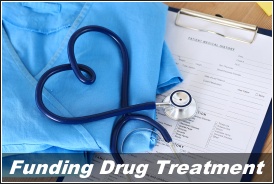 Several organizations in Ohio recently hosted a town hall discussion on the opioid crisis still occurring there and across the country. News commentator, Eric Bolling, was a moderator of the event which was held at Cedarville University.
Several organizations in Ohio recently hosted a town hall discussion on the opioid crisis still occurring there and across the country. News commentator, Eric Bolling, was a moderator of the event which was held at Cedarville University.
Eric and his wife, Adrienne, lost their 19 year old son in 2017 due to an accidental overdose with the powerful opioid, fentanyl.
This town hall discussion was designed to continue raising public awareness on the danger of opioid misuse and the continuing need for treatment and recovery support services to help families deal with this perpetual problem.
The Centers for Disease Control (CDC) report that there were 70,237 drug overdoses in 2017 with 47,600 involving opioids specifically. The article linked above states that the state of Ohio ranked 2nd in overdose deaths only behind West Virginia.
There is promising news in that more Americans are now being educated on opioid risks, and consequently are taking better precautions as well as actively accessing methadone & suboxone programs offering helpful medication-assistance and behavioral counseling. Saving lives and offering recovery are messages that are being heard.

 Follow
Follow

 In past decades, opioid addiction was skewed more heavily toward an older generation of adults. But today we have larger numbers of youth using opioids and experiencing addiction-related problems at earlier ages. Importantly, research has demonstrated conclusively that those who remain engaged in treatment for six months or more are much more likely to stabilize and to enjoy sustained success with recovery.
In past decades, opioid addiction was skewed more heavily toward an older generation of adults. But today we have larger numbers of youth using opioids and experiencing addiction-related problems at earlier ages. Importantly, research has demonstrated conclusively that those who remain engaged in treatment for six months or more are much more likely to stabilize and to enjoy sustained success with recovery. President Obama recently attended the National Prescription Drug Abuse and Heroin Summit in Atlanta, Georgia. Professionals and concerned citizens used the forum to explore ways to address America’s rising opioid addiction problem.
President Obama recently attended the National Prescription Drug Abuse and Heroin Summit in Atlanta, Georgia. Professionals and concerned citizens used the forum to explore ways to address America’s rising opioid addiction problem. PBS’
PBS’ 


